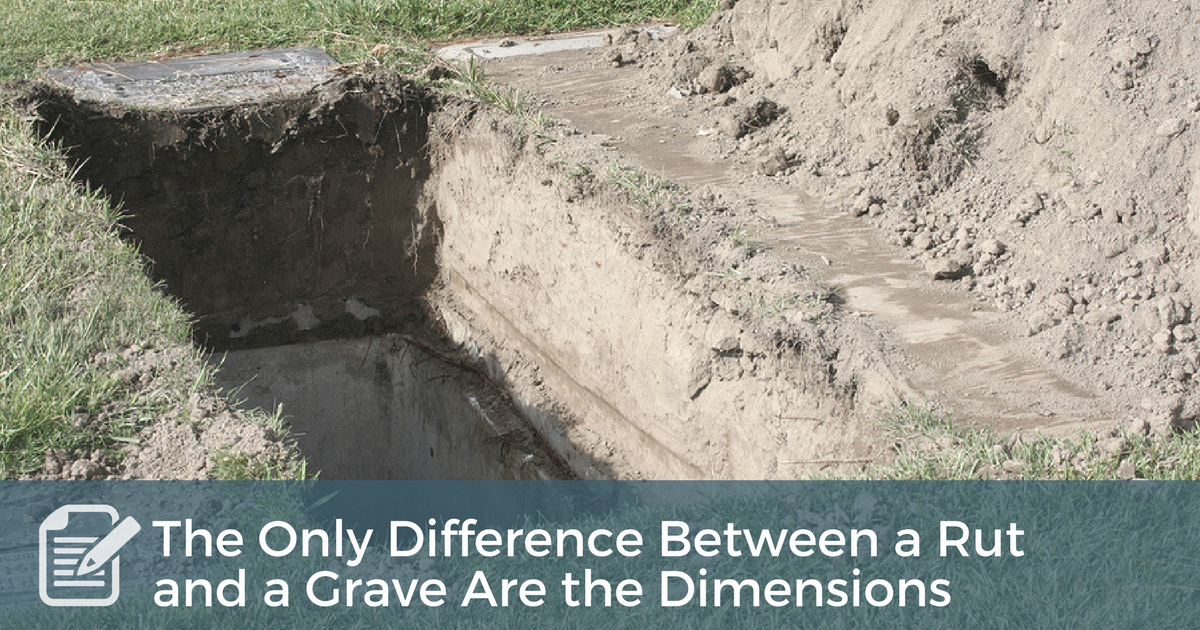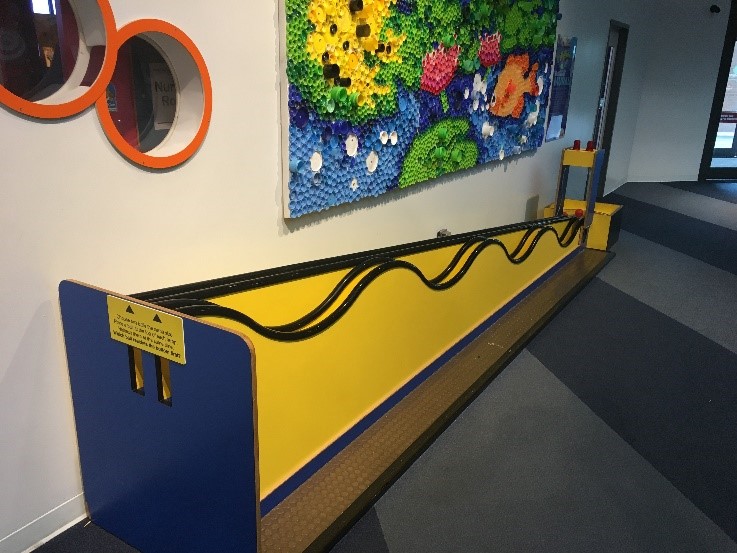
By Dr Brent Sleasman, President of Winebrenner Theological Seminary (brent.sleasman@winebrenner.edu)
“The only difference between a rut and a grave are the dimensions”
– attributed to Ellen Glasgow
I’m in a bit of a rut right now. Our organization has just come through a series of big decisions and the adrenaline is slowing as I take a breath before the next issues surface. It’s fair to say that things are moving in a positive direction; for example, I have the privilege of building a strong personnel team and, as an institution of higher education, we have recently received an affirming report from our main accreditor. And, yet, if I’m totally honest I’m finding myself struggling to keep focused while having a general feeling of melancholy as I engage in my day to day tasks. This isn’t my normal demeanor – many (if not most) times I find myself motivated for the tasks ahead and ready to “be” the leader our organization needs at this time. But not today. In fact, not for the past few days.
As an avid reader I’m very aware of the assumptions driving many of the business conversations today. The mentality that “strong and steady” is best, the idea that “life is marathon and not a sprint,” and the belief that consistency is key seems to permeate much of what is considered “business common sense” in 2017. Perhaps as nothing more than an act of existential revolt, I am finding great dissatisfaction with these prevailing assumptions.

Recently I had a breakthrough in the last place I expected. Having young children, our family took a trip to the Imagination Station, a children’s museum in Toledo, Ohio. While I greatly enjoyed spending the day with my family, my interest wasn’t fully engaged until we reached this exhibit:
Take a close look and you’ll notice two tracks. The purpose of the exhibit is to compare which track allows a ball to arrive at the end the fastest. It is no surprise that this is a trick question. But based on your first impression, like me, you probably guessed the upper track – straight and clearly a shorter distance to the end. But it isn’t the fastest. The answer is counter-intuitive – a ball placed on the lower track (with the ups and downs in the track) actually reaches the end first.
I was intrigued. I sought out a staff member and learned that this demonstrates principles such as momentum, inertia, and velocity. Since no one else was as interested as I was, I continued to drop the balls on the track (much to the amusement of my children). Slowly, a metaphor for organizational life began to emerge from this experience. What I was confronted with is an understanding of the randomness of life that flies in the face of conventional business wisdom.
So, allow me to return to the rut that I’m currently in. In a previous time in my life, this rut would have been met with personal chagrin and fear that I was somehow failing in my job. Of course, there are always ways to get better. But after looking at this science exhibit, I now believe the rut is just the feeling of slowly going up the bank until I reach the pinnacle and begin the adrenaline-filled rush of running down the other side.
As I think about what it means to be created by a God who allows the ball on the wavy track to reach the end first, I am reminded that the ups and downs are going to increase my speed. I began to ask, could I actually reach my goal quicker by going through cycles of activity and inactivity as opposed to being a “steady eddy”?
Think about the trajectory… You start slow, then you pick up speed as you race down the hill and then slow back down as you rise to next the bank. Just when you think you’re going to stall, you pick up speed again and crest the hill on the way through another cycle of fast drop, slow down, crest, and so on.
If I’m working from a faith perspective, is it possible that the God who designed the universe has woven into the very fabric of our existence an ability to reach the end in a faster time through fits and starts, ebbs and flows, as opposed to a strong and steady path? Has the belief in consistency and process been elevated above the ideals of imagination, creativity and sudden bursts of energy?
How do we position ourselves to experience this?
I carry around an immense amount of information that at times seems to bog me down. But I find that it allows me to have a constructive response whenever I encounter circumstances that permit me to provide these answers (it’s like carrying around a set of answers waiting for the best set of questions in which the answer makes sense).
With this new understanding of momentum, I don’t have to fret so much about circumstances that don’t exactly fit my expectation. It is true that an object in motion tends to stay in motion and an object at rest tends to stay at rest. Our organization is in motion. It will stay in motion. Perhaps this isn’t a rut. This is a preface to an organization building momentum.



2 thoughts on “The Only Difference Between a Rut and a Grave are the Dimensions”
Great encouragement and illustration. Thank you for sharing this insight!
Hi Dr. Brent Sleasman, nice to meet you and thank you again for sharing this encouraging message with us.
Thanks CAM!